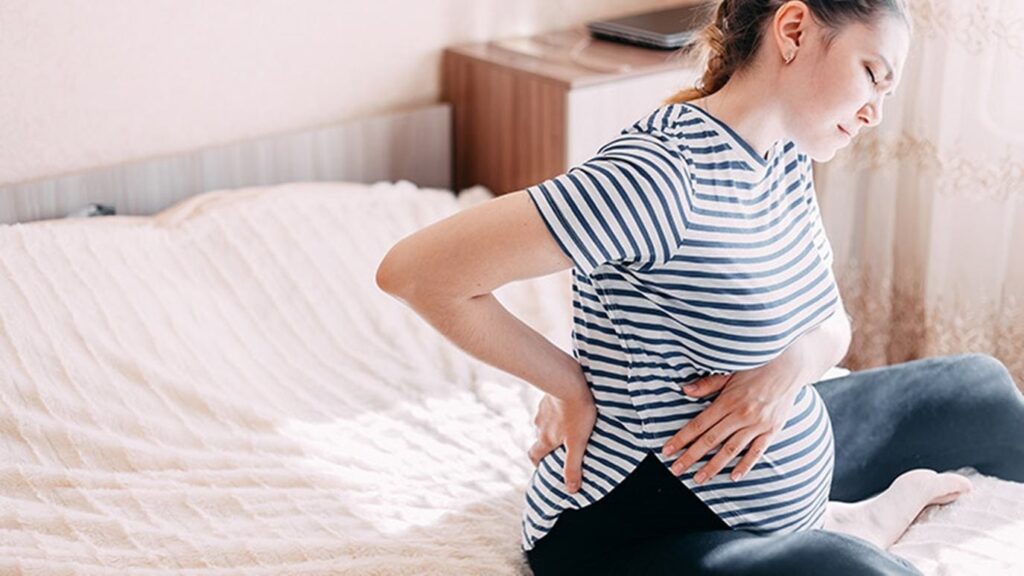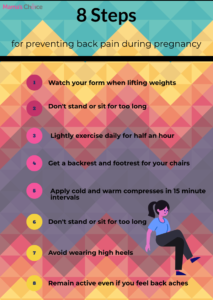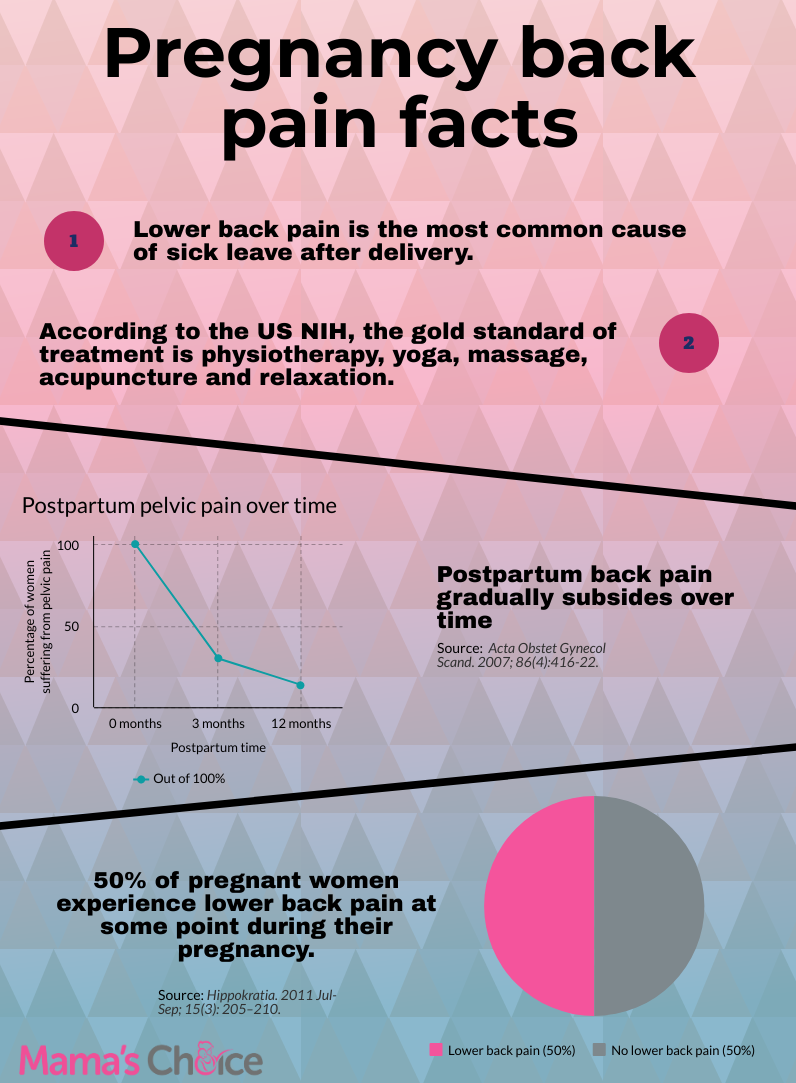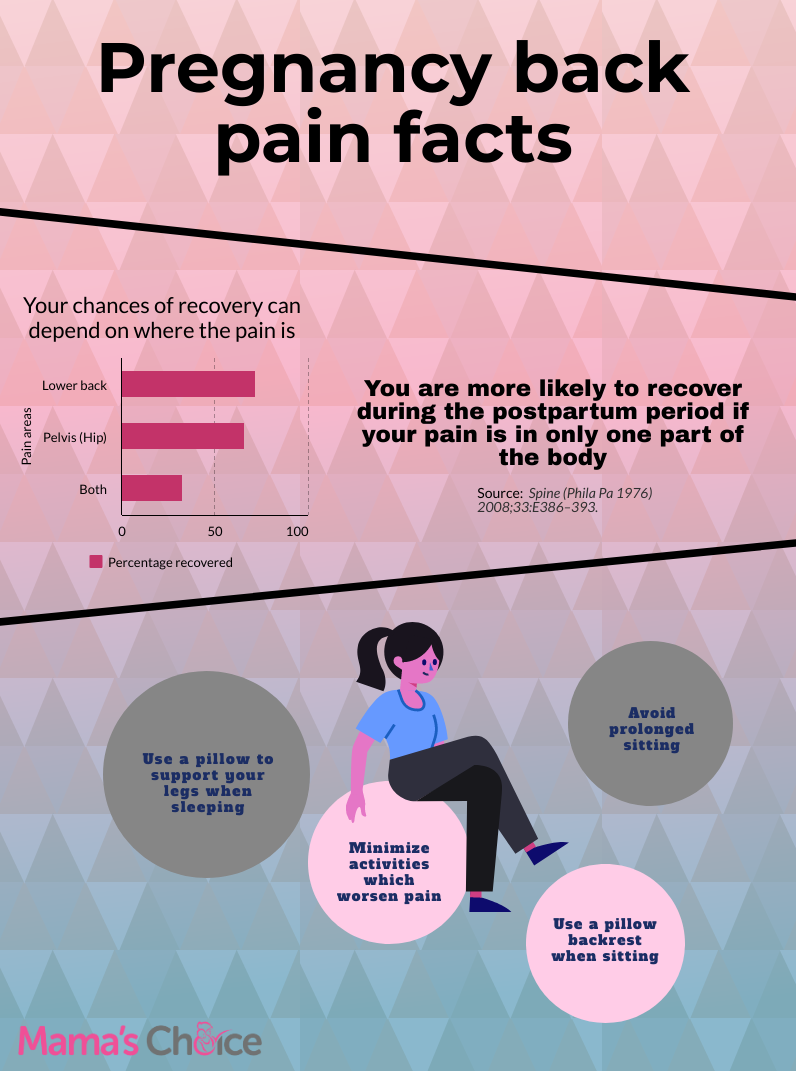Did you know that most studies estimate that 50% of pregnant women suffer from lower back pain? It’s important to remember that back pain during pregnancy is mostly temporary.
Welcome! We’ve written a guide for just about everything we could think of regarding back pain during pregnancy – If you’ve got anything you’d like us to add, leave a comment below! We’ve divided our guide into:
The causes of back pain depending on your trimester
Steps you can take to prevent back pain during pregnancy
Interesting statistics and facts about back pain during pregnancy
When should you worry about back pain?
Is back pain dangerous to the womb?
Will back pain go away after giving birth?
How to deal with back pain during pregnancy
Skip ahead to any section you find the most interesting – this article is pretty long! We’ve also written an article about solutions to back pain.
Why do pregnant women suffer from back pain?
If you’re interested in understanding why you probably suffer from back pain during pregnancy, then this section is for you!
Why pregnant women suffer from back pain in the first trimester
If you suffer from back pain in the first trimester, you can probably pin it on hormonal changes.
Ovaries produce a lot of progesterone, which slightly weakens your muscles and joints while making your ligaments (tissues) more flexible.
As a result, your waist will probably hurt as it slowly begins to bear your baby’s weight.
Why pregnant women suffer from back pain in the second trimester
During the 4th to 6th month, back pain is caused when your muscles are forced to become firmer while supporting your enlarging tummy.
Sacroiliac joints, which connect the pelvis with the spine become looser, causing pain in the back, pelvis and waist.
Why pregnant women suffer from back pain in the third trimester
The third trimester is quite different!
Back pain during the third trimester is normally caused by your baby’s growing size. As a result, the blood vessels around your pelvis and back can become depressed, putting pressure on your nerves and causing pain.
Enlargement of the uterus also separates the muscles between the ribs and pubic bones. This can cause extra strain and result in back pain.
What does this mean for me?
You won’t necessarily experience these three phases above. You might only experience back pain early on, or late in pregnancy.
Depending on your pre-existing conditions or the nature of your pregnancy, the symptoms could vary from being mild to quite painful.
We recommend that you consider exercising often, or making sure that you don’t stay stationary for too long! In case you missed it, over here you can find our tips for dealing with back pain during pregnancy.
Steps you can take to prevent back pain during pregnancy
Our number one tip to prevent back pain: Watch how you squat, sit, lift and put down weights. We can’t emphasise this enough.
It’s not easy to explain how to squat properly just using pictures and text, so we’ve found a great video on Youtube to help you out. Squatting properly to pick things up is an important step to preventing back pain during pregnancy!
Don’t be disheartened if you still experience back pain despite following these steps. Most pregnant women experience back pain anyway, and these steps will definitely help you ease the pain you would otherwise experience.
Interesting statistics and facts about back pain during pregnancy
We’ve compiled some great statistics about back pain in a simple format below. Save it for your personal reference if you’re interested!
We’ll look to add more infographics with our content in the future if you enjoy it. Let us know what you think in the comments below!
It’s unfortunate to have to tell you bad news – but sometimes, there can be long-term health problems from your pregnancy back pain. Not everyone recovers, which is why it’s important to stay healthy during your pregnancy and use the pain management techniques shown in the infographic above.
When should I worry about back pain?
Back pain is normally just a sign of your changing body during pregnancy. However, you should be concerned if it’s been accompanied by vaginal bleeding, fever, or a burning sensation when urinating.
These conditions could indicate that you have a urinary tract infection, which can result in preterm birth.
We recommend that you do check with your doctor immediately for professional treatment.
Is back pain during pregnancy harmful to the womb?
No, back pain is not dangerous to your baby. It’s normally just a symptom of your changing body.
However, it can definitely cause long-term health problems for yourself. It’s unfortunate that a pretty sizeable percentage of pregnant women will continue to face back pain after their pregnancy (See our infographics above).
How to get rid of postpartum back pain
After giving birth, your pregnancy back pain should probably go away. However, it can be replaced by postpartum back pain. Studies do show that up to 75% of pregnant women experience back pain immediately after birth.
You should try to follow the steps we listed earlier to help the pain subside.
The usual practices apply: Keep exercising, watch how you lift and bend while carrying weights, make sure you aren’t stationary for too long and don’t wear high heels.
There are some additional tips we can provide, especially for the postpartum period!
- Try some pelvic floor strengthening exercises, like bridges and shifting planks.
- Keep your spine straight when walking and when bending to pick up your baby.
- Pro tip: You can start walking very soon after normal delivery or Caesarean section delivery. It might not seem like it helps your back, but it actually does. Shifting your body relieves the pressure on your lower back. Did you know that sitting is actually the most harmful posture for your back?
How to deal with back pain during pregnancy
There’s a chance that even if you followed all the steps we shared earlier, you’ll still encounter back pain. Here are some tips you can follow to alleviate your pain:
- Try to sleep facing the left to ease blood circulation.
- Avoid stress as it can increase muscle pressure and worsen your back pain.
- Use comfortable shoes when travelling. Putting your feet firmly on the ground can help you relieve pressure from your hips.
- Stop sitting down so often. Sitting is one of the most harmful postures for your lower back.
- Avoid carrying heavy loads wherever possible. Ask for help!
- Try out prenatal exercises, such as yoga, gymnastics, and swimming. We’ve run some features and tutorials about prenatal exercise on our Instagram account before. Go ahead and take a look!
- Take a warm bath to relieve muscle pain.
- Consider getting a prenatal massage. Don’t be afraid to ask your partner for help! A good prenatal massage oil can help you relax as well as ease your pain.
- Compress the back and pelvis with warm and cold water frequently. Did you know that cryotherapy (cold therapy) is used everywhere? Athletes use it to recover after exerting their ligaments and muscles – but we digress. One simple technique you can try is to alternate between warm and cold compresses. You can try applying ice to your back for 15 minutes, followed by a warm towel for the next 15 minutes.
Conclusion
Back pain is just one of the many issues you’ll face during your pregnancy. We’ll be blogging about many other problems such as morning sickness, nutrition and stretch marks soon, so you can subscribe to our newsletter if you enjoy our content and would like to read more!
We’re always trying to improve our content for our mums, and we’d love to hear what you’ve got to say! Please tell us if you found our guide useful and whether you’d like to see anything added in. Feel free to ask us about any of your pregnancy questions and back pain issues as well!
Mama's Choice Team
The Mama's Choice PH team is composed of three Mamas who are dedicated to spoiling their little ones with lots of cuddles, playtime and the occasional sweets, of course. <3












